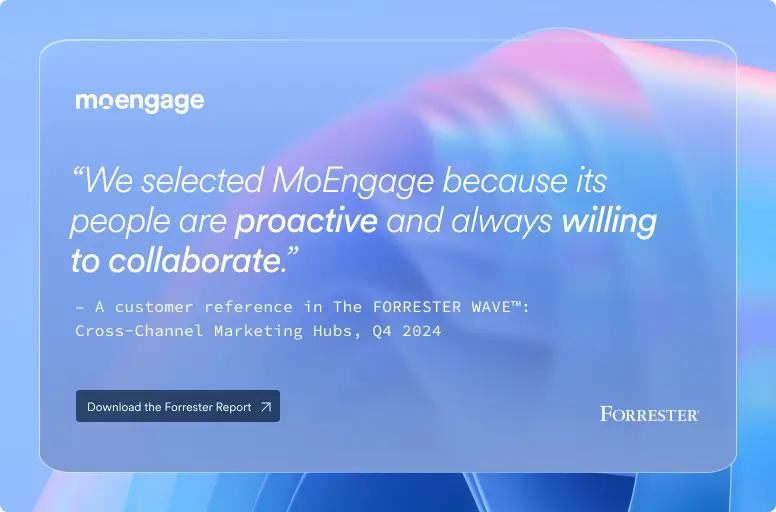Introduction
It is common knowledge that different industries have been differently affected by the pandemic. On the other end of the spectrum, the online gaming industry has benefitted from users staying home (due to the mandatory lockdown and social distancing) and spending time playing games.
In this blog, we’ll look at the various growth and monetization strategies businesses can leverage to sustain the current development and understand the initiatives Ludo King embraced to drive organic growth.
Let’s jump right in.
The Exponential Growth of the Gaming Industry
During the pandemic, the gaming university, notably Ludo King, has witnessed an enormous boom, which has translated into positive growth for the overall business–with the polar metrics like the DAU, the install numbers, the app engagement, and revenue experiencing a 3x growth. Ludo King previously had 15 million daily active users, which has gone up to 50 million daily active users. The monthly active users have shot up from 17 million users to 185 million users. Additionally, in terms of app engagement, players who typically played for about 13 to 35 minutes previously spent about 50 minutes on the app daily. From the revenue standpoint, the brand has experienced a staggering 2.5x growth. Hardly surprising. So the real question becomes: “What has fuelled this organic, supersonic growth?” Keep reading.
Growth Strategies for Building Long-Term Relationship with the Users
Considering that engagement drives monetization, brands must focus on the engagement factor. Here are some expert-approved tips on how to drive user engagement and boost organic growth:
- Customized communication: Brands should be more conscious about the communication they are sending out to avoid sounding ‘tone deaf’ to the users. They should provide users with specific communication about updates or features that might interest their target base. For example, you can use two important channels–push notifications and in-app messaging–to get users to come back on the platform, a strategy that has worked swimmingly well for Ludo King.
- Segmentation: Segmentation plays a larger role in driving engagement and is important for doing the right kind of monetization. Brands should segment user groups based on various factors such as LTV, the type of product, the type of user base using a product, etc. An example of this for the gaming domain would be driving in-app game events to segment users, as Ludo King did. First, the brand monitored and tracked user progress using the right tracking tools. It then categorized the users into different buckets. Finally, it strategized on the different kinds of offers, ad monetization strategies, or features it wanted to showcase to the user base to drive engagement.
Brands need to remember that capturing user information is a sensitive topic and proceed accordingly. Interestingly, at Ludo King, users are not segmented based on traditional elements such as age, demographics, etc. but on how happy they are with the product/platform.
- Evolving features: To ensure that your brand has a highly engaged user base, even post Covid, brands will need to focus on innovation-led development of features that actually keep these players engaged. Moreover, it is important to understand why users are engaging with your brand. For example, for Ludo King, before Covid, users were playing games for the fun of it. Now, they play games because they have more free time on their hands. As a result, users pay close attention to the little details on the platform and write long emails expressing their views about the game to the brand. This real-time feedback doubles up as a treasure trove of user-centric information. All in all, organizations need to set a roadmap and understand ways to become super agile to work towards fulfilling their dynamic user base’s needs in real-time.
“Make the products so sticky that the user continues to engage with the brand, long after Covid is gone.”
- Monetization model: Understanding the suitable monetization model for your product can lead to better segmentation. At Ludo King, the brand focuses on advertising and in-app purchase monetization models. The brand also focuses on using games as a service, which makes sense because this directly supports the free-to-play approach. To enhance its game as a service model, the brand introduced themes within the game, which leads to a positive change in the player’s mood and, thus, improves the overall experience of playing the game. That said, one of the biggest challenges of using the game as a service is its design aspect and customizing the minor elements (think: tasks, filters, etc.) to provide a consistent gaming experience. As a result, the revenue has leveraged an increase of seven to ten percent via the in-app contribution instead of the traditional, more linear growth model of advertising.
Remember that the monetization model will differ from game to game as well as from genre to genre. It will also depend on the core design of the product. So the model you choose will ultimately depend on these factors.
“Make the engagement your best game so that people don’t have to worry about paying you more. This way, you can also boost your LTV.”
India is considered one of the biggest markets for gaming. In fact, according to a recent report, India had the highest number of downloaded apps for March globally. So it makes business and logical sense to drive organic growth in this market through data-driven, well-conceived strategies and not miss out on this massive window of opportunity for growth at scale.











